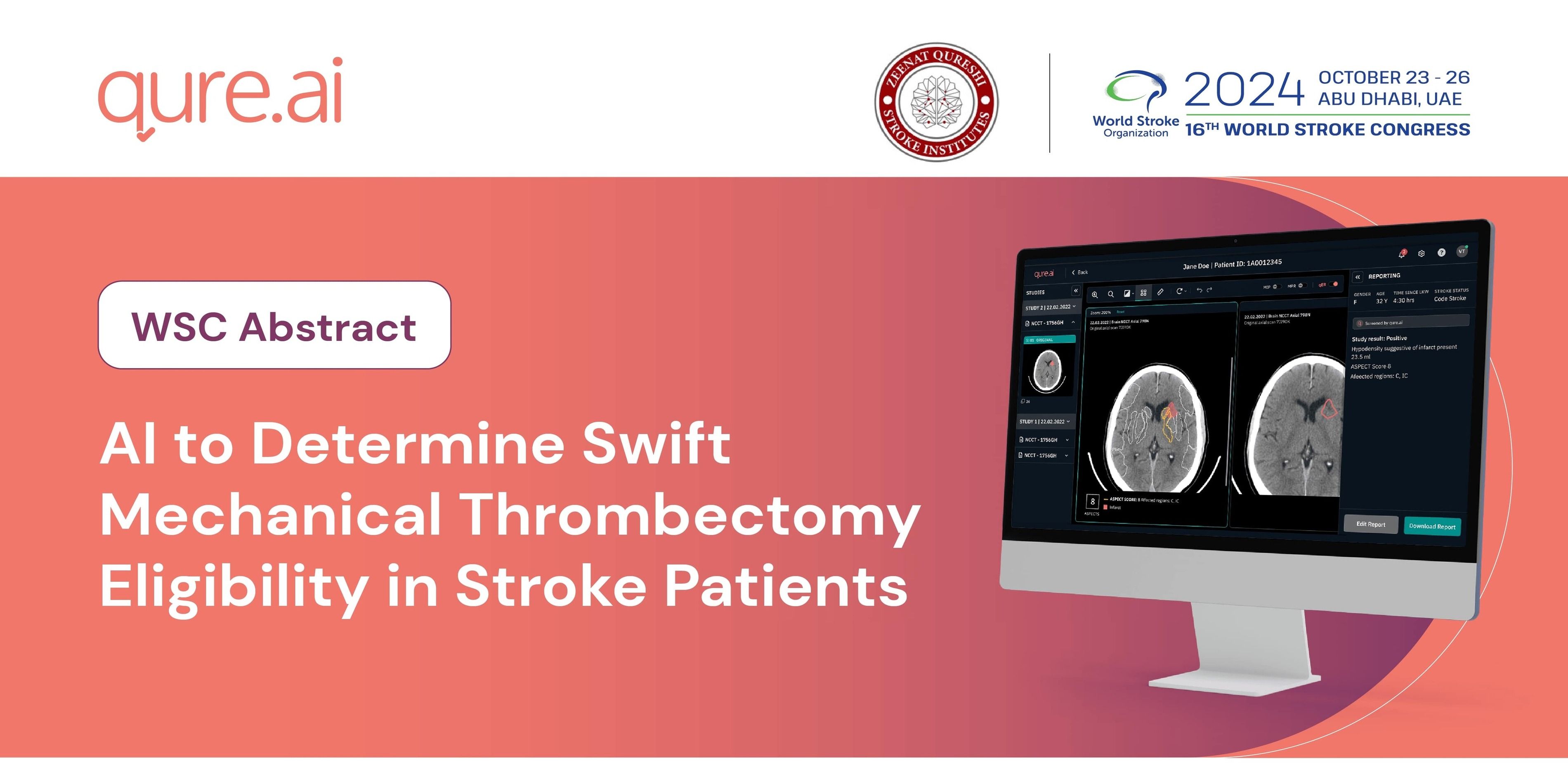ZQSI retrospective review showed 98% of patients predicted by AI were truly eligible for MT procedure, reducing the need for advanced imaging & saving time

Back
A new retrospective study presented by Qure.ai at the World Stroke Congress 2024 in Abu Dhabi showcases the potential of artificial intelligence (AI) to expedite the eligibility assessment for Mechanical Thrombectomy (MT) in patients suffering from Acute Ischemic Stroke (AIS).
The findings offer the potential to help healthcare providers expedite care, decrease the door to puncture time and lessen the cost burden stemming from advanced imaging, especially in low-income settings. This could be a game changer with World Stroke Organization predictions of stroke burden standing at 87% in low- and middle-income countries (LMICs) by 2050.
The study was conducted on a retrospective cohort of 260 patients that underwent treatment for stroke at Zeenat Qureshi Stroke Institutes (ZQSI), Minnesota, USA. Using the Qure.ai AI enabled stroke detection solution qER, the eligibility of each patient was analysed for a Mechanical Thrombectomy using ASPECT Score, infarct volume, and a few clinical parameters. The data was split into two equal halves, allowing for customised testing parameters. The first set (Model 1) was analysed using factors like National Institutes of Health Stroke Scale (NIHSS), Infarct volume, ASPECT score, time since the onset of symptoms and patient age to predict the eligibility for MT. The second set (Model 2) was analysed on the same parameters but added the presence of large vessel Occlusion (LVO). About 82.5% of the patients predicted as eligible for MT by the first model had undergone MT while 97.5% of the patients predicted as eligible for MT by Model 2 had undergone MT.
“The rising global stroke burden demands immediate action, and digital health innovation plays a crucial role in optimizing care. This study at ZQSI shows that Qure.ai’s AI models can help support physicians assess mechanical thrombectomy eligibility with greater speed and precision, addressing one of the most time-sensitive aspects of stroke treatment. We are confident that these solutions will significantly enhance stroke care globally and help in alleviating stroke burden, especially for LMICs,” said Prashant Warier, Founder and CEO, qure.ai.
“This AI-driven approach represents a breakthrough in stroke care, streamlining the process of determining treatment eligibility and reducing dependence on advanced imaging. By leveraging AI's capabilities, we can accelerate clinical decision-making, optimize patient outcomes, and demonstrate the transformative potential of technology led healthcare.” Said Adnan I. Qureshi, Professor of Neurology and Program Director Endovascular Surgical Neuroradiology program, University of Missouri, Columbia, and Chief Executive Officer, ZQSI.
Qure.ai’s Stroke Care Suite includes qER AI solution and Qure App. qER, an advanced deep-learning software that assesses NCCT scans to identify intracranial haemorrhages, infarcts and Large Vessel Occlusion on CT Angiography. The AI algorithm can also provide anatomical location identification and quantification, and ASPECTS scoring for Stroke severity. It offers a priority flag for critical cases, an overlay highlighting abnormal findings, and detailed reports quantifying abnormalities. qER is FDA, CE MDR cleared, with approval from multiple national regulators. The Qure App facilitates critical care coordination with timely alerts.
Stroke is the second-leading cause of death in the world. Each year there are 12 million new cases, translating to 143 million healthy years of life lost to stroke per year. It is estimated that 1in 4 people over the age of 25 will experience stroke in their lifetime.
Note: Abstract Number: SO028 / #1302